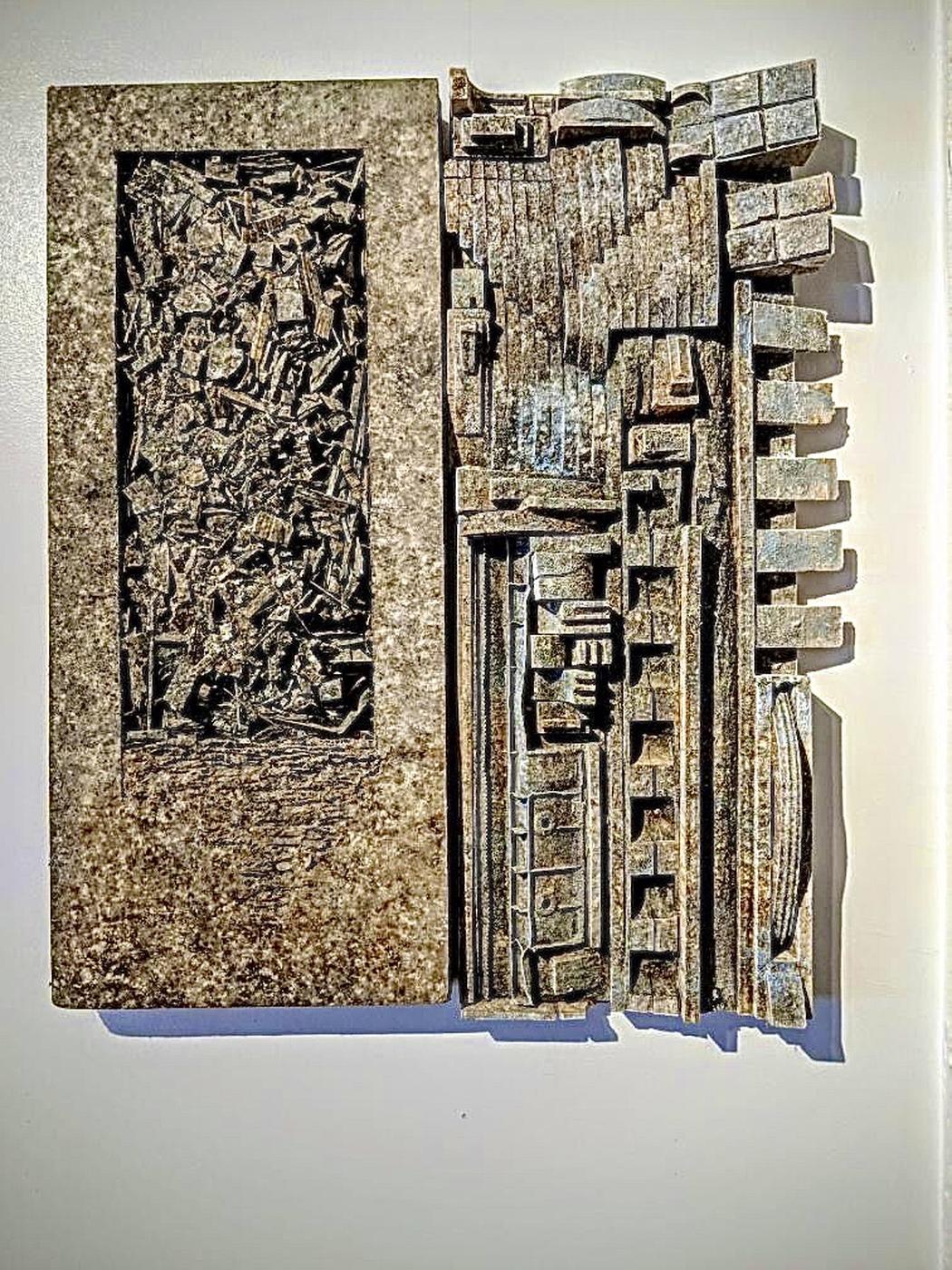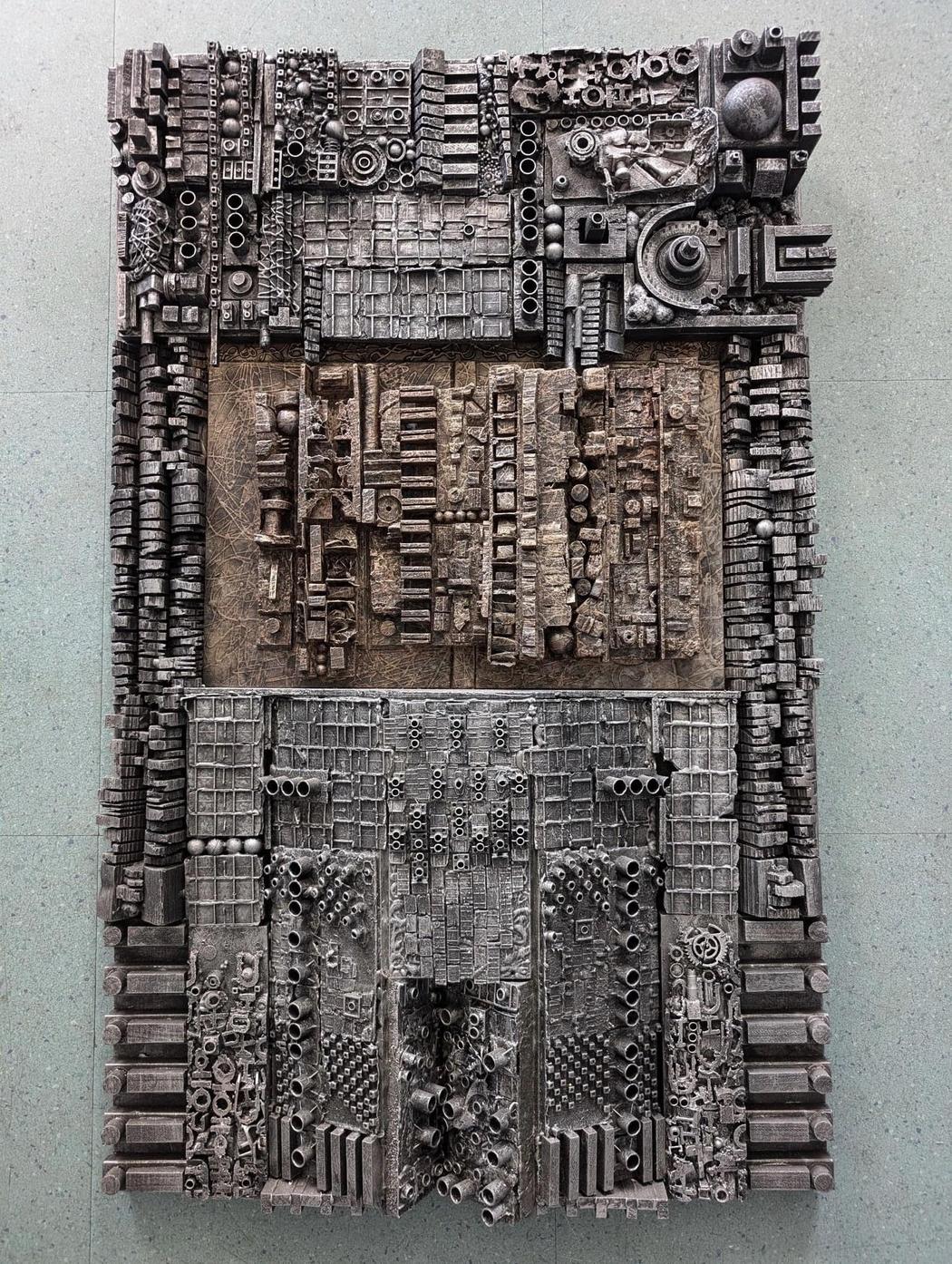Damien Berdichevsky
Where do you live: Brooklyn, New York
Your education: I studied Psychology/Psychoanalysis, Dance-Theater, Music composition, Art History and Zen Buddhism
Describe your art in three words: Multi Media Art
Your discipline: Photography, Painting, Music and Sculpture
Website | Instagram
You describe your work as a “dialog with materials.” Can you elaborate on what this dialogue feels like during your creative process?
Materials and media are entities, so this dialogue with materials consist of being receptive to any sort of possibles and odds and ends, then the real action begins. It is very possible to associate sections of the work to other parts, from another times, constructions and deconstruction, even destructions, welcome the accidental, the chance and the involuntary.
From moving things around like taking paint out of a tube, place it on the canvas and move it around with a brush or any other device to moving heavier objects. This are movements but also gestures.
Free thinking or free association, all that occurs in my mind, related or not to the moment of working, For instance, contrasts of forms, colors textures, sounds, emotions, and contradictory ideas, antagonist forces coming together.
I think of me as an abstract expressionist, or abstract lyricist, I don’t need to go after any subject that is external; a whole infinite universe is inside of ourselves. This is very exciting but also terrifying because by choosing this way of working we are confronting the unknown all the time. This interaction with materials is pure dialogue, and as such, many time we don’t quite understand it.
How do you decide when a piece is finished—especially if your process is improvisational and non-conceptual?
I think a work is finished when what you have created radiates such a presence that seems like it always existed; even before it was created.
Many of your works seem to explore texture and form deeply. What role does tactility play in your artistic process?
In most of my work, either of image, volume and mass or sound and lyricism the roll that the tactile plays is dominant, it establish character and presence, and spirit, or mood. For me basically the most important qualities that brings a work to life.

Can you talk about your attraction to found objects? Is there a moment of recognition when you know an object belongs in your work?
Yes, there is indeed a moment of recognition, it is a form of insight. It is very exciting because it is a surprising appearance. It feels like the thing was waiting for you. Something destined to meet you. But also could be that you find something that will bring great effort and struggle because the point is to make it disappear onto itself in order to create something that was always there but unseen. You make it visible and tactile by a slow and intense process.
Your life spans several cultures—Argentina, Brazil, the U.S.—do you feel these geographies influence your aesthetics unconsciously?
Most of my influences comes from memories of childhood, or dreams, objects and landscapes I see in dreams, but again, everything is very abstract, tactile, very sensorial, sensual, haunting. I don’t see how my work of painting, sculpture or music represent any culture in particular but rather a form of the same perception of the world that caught my attention as a child. Things like sounds, textures, sensuality and the aural forces surrounding a certain thing, that is what for me makes something to be what it is.
What is the significance of silence or emptiness in your compositions?
Most of those silences and emptiness are either moments of reflection, pause and replenish or intentional gaps to connect with the spirit or the mood of the thing in question.
You deliberately avoid symbolism and meaning, yet viewers might still find narrative or emotion. How do you feel about people interpreting your work this way?
By avoiding symbolism and meaning I connect to the real. The real naturally rejects symbolism and any form of representation or conceptualization. The real stands by itself. In our illusory world nothing is actually real because it is composed and signified by language, and language is a system of symbols used for description and for expressing desires. It is a infinite chain of things pointing to other things, they are meanings meaning other meanings, it never ends.
We are trapped in this loop of infinite signification, but that’s language and that is cool because it allow us to communicate but it is also frustrating when we try to appeal to real feelings and emotions, words are not enough. It is only the real that stands by itself because it rejects symbols.
The real refuses to be represented. So by avoiding conceptualism I let the material, the energetic, to have a presence; this is my goal and through the process I make it happens. Think of the work of art of indigenous tribes or the abstraction of very young children. It seems so fantastic because it is real. For me it is also a way to invoke the unconscious, the unnamed. The unnamed is real because it refuses to have a name, it demands to be experienced.


Leave a Reply
You must be logged in to post a comment.